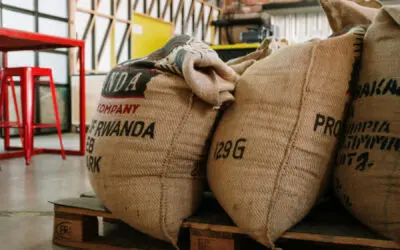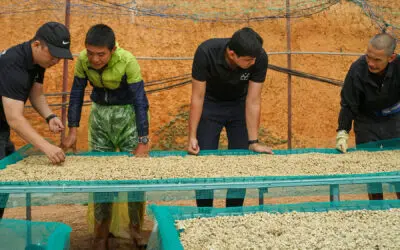Fair Trade certification has evolved from a fringe movement to a market-shifting force. Yet beneath the familiar label lies a complex reality that deserves closer examination – especially for those of us dedicated to crafting exceptional coffee while supporting sustainable practices.
Let’s cut through the marketing speak and examine what Fair Trade certification actually means for your morning coffee and the hands that produced it. At the time of my writing this, the Fair Trade premium sits at $0.20 per pound above market price, with an additional $0.30 for organic certification. While this may seem modest, consider that when coffee prices hit historic lows of $0.45 per pound in 2019, this premium represented a crucial lifeline for many farming communities. According to Fairtrade International’s 2023 Impact Report, certified cooperatives received over $190 million in premiums last year alone. But here’s where it gets interesting: The real impact of Fair Trade extends far beyond price premiums. The certification’s requirements for democratic organization have transformed how many coffee communities operate. I recently visited a cooperative in Central America, where Fair Trade-mandated structures enabled farmers to pool resources for a community-owned wet mill – dramatically improving their coffee quality and bargaining power.For a deeper understanding of wet milling, see Ramon Siever’s insightful post, Wet Milling: The Mechanics, Objectives and Outcomes.However, we must acknowledge the system’s limitations. The certification costs can be prohibitive for smaller producers, and the fixed premium structure doesn’t always reflect the true cost of production across different regions. More concerning is that only about 25% of Fair Trade certified coffee actually sells at Fair Trade prices, with the rest relegated to conventional markets despite farmers’ investments in certification. For home brewers committed to ethical sourcing, here are concrete actions you can take:
1. Look beyond the label: Research roasters who maintain direct trade relationships alongside Fair Trade certification. In my market, for example, Rosti Coffee Co. is one of a number with direct relationships. In Rosti’s case, they partner with Sancoffee in Brazil. Don’t be shy about asking whether companies importing coffees directly publish detailed annual transparency reports that offer insight into their pricing structures.
2. Support roasters who engage in “Fair Trade Plus” practices: Some roasters commit to paying significantly above the Fair Trade minimum. Edmonton’s The Colombian Coffee Bar & Roastery, for instance, consistently pays above Fair Trade prices for their family-linked relationship coffees.
3. Engage with your coffee community: Join cuppings and educational events at local roasteries. Understanding quality differences between various sourcing models helps justify paying premium prices for ethically sourced beans.
4. Consider starting a coffee club: Pooling resources with other enthusiasts to buy larger quantities directly from importers who work with Fair Trade cooperatives can make premium coffee more accessible while supporting ethical trade.
From my vantage point in the industry, Fair Trade certification remains an important tool for improving coffee sustainability, but it’s just one component of a more complex solution. The most exciting developments I’m seeing combine Fair Trade’s systematic approach with direct trade’s focus on quality and relationship-building. For those interested in diving deeper into this topic, I recommend reviewing the latest research from the Specialty Coffee Association’s Sustainability Council and following our work by subscribing to Bean Indigo’s The Coffee Authority Weekly, which regularly publishes updated analyses of certification impacts. The future of ethical coffee sourcing will likely involve a hybrid approach that builds on Fair Trade’s foundation while embracing innovations in transparency and direct relationships. As home brewers and industry professionals, our role is to stay informed, ask tough questions, and support practices that truly serve both quality and sustainability. What’s your experience with Fair Trade coffee? Have you noticed quality differences between certified and non-certified beans? Share your thoughts in the comments below, and let’s continue this crucial conversation about building a more sustainable coffee future. Want to learn more about coffee sustainability? Sign up for our weekly newsletter where I share exclusive insights into the emerging trends of the industry.


0 Comments